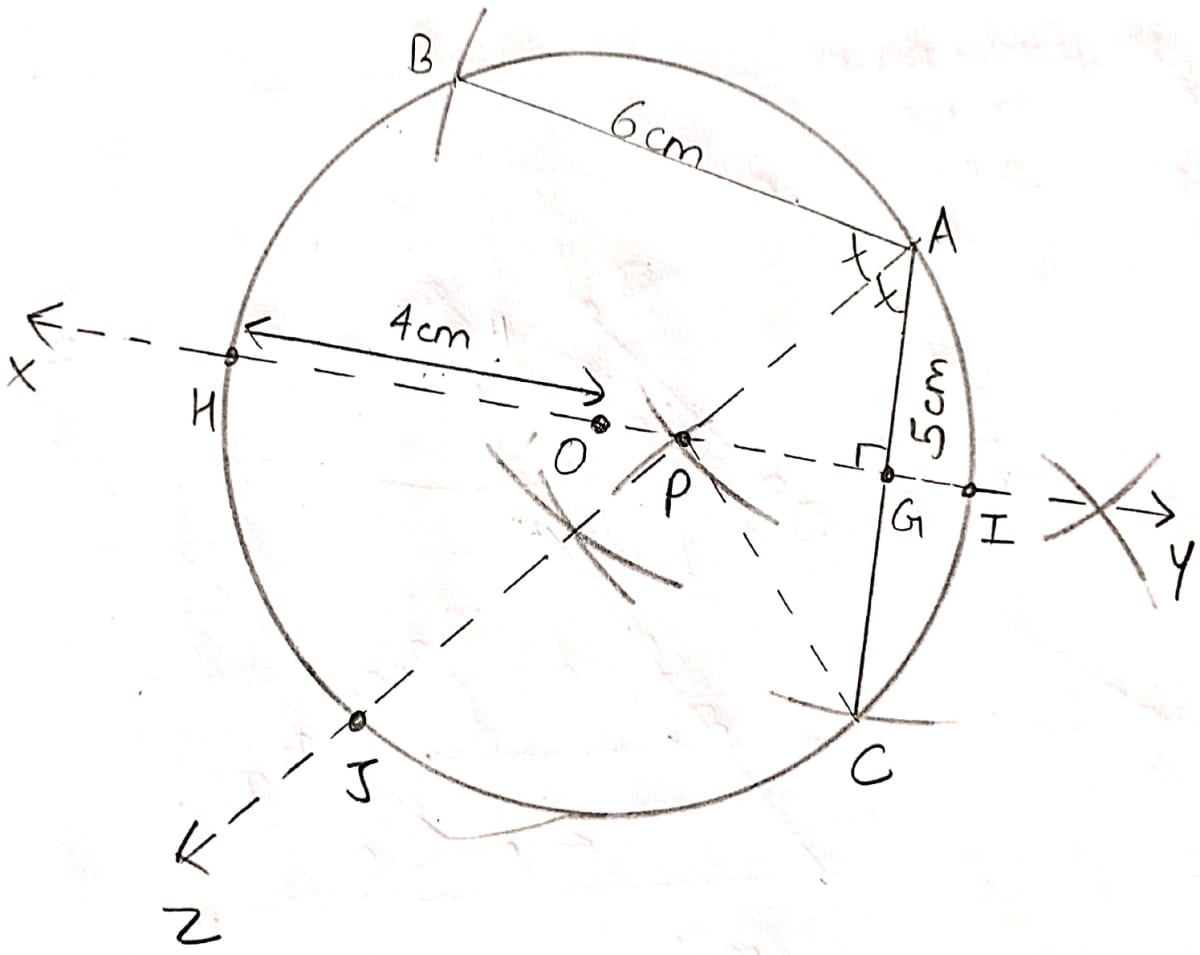Mathematics
Use ruler and compasses only for this question. Draw a circle of radius 4 cm and mark two chords AB and AC of the circle of length 6 cm and 5 cm respectively.
(i) Construct the locus of points, inside the circle, that are equidistant from A and C. Prove your construction.
(ii) Construct the locus of points, inside the circle, that are equidistant from AB and AC.
Locus
35 Likes
Answer
Steps of construction :
Construct a circle with center as O and radius 4 cm.
Take a point A on the circle. From A make arcs of radius 6 cm and 5 cm and where they intersect the circle mark those points as B and C respectively.
(i) We know that locus of points that are equidistant from two points is the perpendicular bisector of line segment joining those points.

So from figure,
IH is the locus of points inside the circle, that are equidistant from A and C.
Hence, the locus is the diameter of the circle which is perpendicular to the chord AC.
Proof:
Consider △GPA and △GPC.
∠PGC = ∠PGA (Both are equal to 90°)
PG = PG (Common side)
CG = AG (They are equal as GH bisects AC).
Hence, by SAS axiom △GPA ~ △GPC.
Since triangles are similar, hence the ratio of their corresponding sides are equal.
Hence, proved that AP = PC.
(ii) We know that locus of points that are equidistant from two lines is the angular bisector of the lines.
So, from figure,
AZ is the angular bisector of angle between AB and AC.
Hence, locus is the chord of the circle bisecting ∠BAC.
Answered By
8 Likes
Related Questions
Using ruler and compasses only, construct a quadrilateral ABCD in which AB = 6 cm, BC = 5 cm, ∠B = 60°, AD = 5 cm and D is equidistant from AB and BC. Measure CD.
Construct an isosceles triangle ABC such that AB = 6 cm, BC = AC = 4 cm. Bisect ∠C internally and mark a point P on this bisector such that CP = 5 cm. Find the points Q and R which are 5 cm from P and also 5 cm from the line AB.
Ruler and compasses only may be used in this question. All construction lines and arcs must be clearly shown, and be of sufficient length and clarity to permit the assessment.
(i) Construct a triangle ABC, in which BC = 6 cm, AB = 9 cm, and ∠ABC = 60°.
(ii) Construct the locus of all points, inside △ABC, which are equidistant from B and C.
(iii) Construct the locus of the vertices of the triangles with BC as base, which are equal in area to △ABC.
(iv) Mark the point Q, in your construction, which would make △QBC equal in area to △ABC, and isosceles.
(v) Measure and record the length of CQ.
Draw a straight line AB of length 8cm. Draw the locus of all points which are equidistant from A and B. Prove your statement.